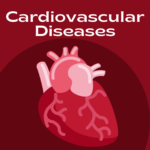Cardiac surgery has witnessed remarkable innovations and advancements over the years, transforming the way heart diseases are treated and managed. These innovations have not only improved the success rates of surgeries but have also enhanced the quality of life for individuals with heart conditions.
Minimally Invasive Procedures:
One of the most significant advancements in cardiac surgery is the development of minimally invasive procedures. These techniques use small incisions and specialized instruments, reducing the trauma associated with traditional open-heart surgery. Examples of minimally invasive procedures include:
- Minimally Invasive Coronary Artery Bypass Surgery (CABG): This procedure uses small incisions and robotic-assisted technology to bypass blocked arteries, reducing recovery time and scarring.
- Transcatheter Aortic Valve Replacement (TAVR): TAVR is a minimally invasive procedure used to replace aortic valves in patients who are not candidates for open-heart surgery. It involves threading a catheter through a blood vessel to implant a new valve.
Robot-Assisted Surgery:
Robot-assisted surgery has revolutionized the precision and control of cardiac procedures. Surgeons can perform complex surgeries with enhanced dexterity and precision using robotic systems. This technology allows for smaller incisions, reduced pain, and shorter recovery times.
Hybrid Procedures:
Hybrid procedures combine traditional surgery with minimally invasive techniques, offering a tailored approach for each patient’s specific condition. For example, a surgeon might perform a minimally invasive catheter-based procedure followed by traditional surgery in the same operation.
3D Printing and Personalized Medicine:
3D printing technology has enabled the creation of patient-specific models of the heart, allowing surgeons to plan and practice complex procedures in advance. This personalized approach enhances surgical precision and outcomes.
Artificial Intelligence (AI):
AI is being used to analyze vast amounts of patient data to predict heart disease, identify the best treatment options, and optimize surgical plans. AI algorithms can assist surgeons during procedures by providing real-time guidance and feedback.
Cardiac Regeneration and Stem Cell Therapy:
Researchers are exploring the use of stem cells to regenerate damaged heart tissue. This groundbreaking approach holds the potential to repair the heart after a heart attack and restore its function.
Remote Monitoring and Telemedicine:
Telemedicine and remote monitoring technology allow healthcare providers to monitor patients with heart conditions from a distance. This has become especially valuable during the COVID-19 pandemic and provides ongoing care for patients with chronic heart diseases.
Conclusion:
The field of cardiac surgery is continually evolving, with innovations that offer hope and improved outcomes for individuals with heart diseases. These advancements not only enhance the effectiveness of treatments but also contribute to reduced recovery times and improved overall quality of life for patients. As research and technology continue to progress, the future of cardiac surgery holds the promise of even more groundbreaking developments in heart disease treatment.




